Posted by Alan Homer on 2023 Mar 2nd
Necessities For A Backcountry Hunt - Inside MDT
Backcountry hunting requires a lot of gear. I have been backcountry hunting for many years, and not only has the gear evolved, but it has also gotten lighter. Let's look at some mission-critical gear that will assist in having a safe, positive, and hopefully successful backcountry hunt!
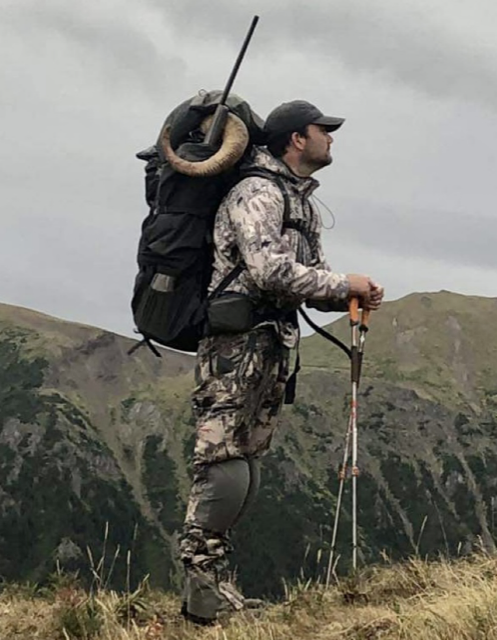
A comfortable, dependable, durable, and proven backpack is a must on any backcountry hunt.
BACKPACKS
There are many lightweight and reliable backpacks on the market today. KUIU, Stone Glacier, and Mystery Ranch, to name a few, are all great, lightweight, durable, and proven packs. Some have a lot of pockets and bells and whistles, and some are just simple packs. Ultimately it all comes down to the user preference, but most important is how that pack feels on a person's back. We all have different body types, and what works for one might not work for another. Packs feel different when weighted, so it is important to test a pack with weight. When shopping for a new bag, ask your friends if you can try on theirs and take a hike or at least walk up and down some stairs. You will find out quite quickly if the pack is for you. I have been using the Kuiu carbon frame with the 7200 pack attached for a while now, and it has been a solid choice for my needs. I recommend a good rain cover for the pack, as I guarantee from experience you will need it.
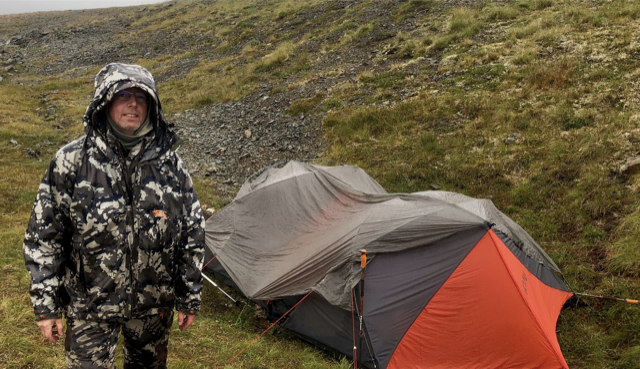
Good tents, Sil tarp, and rain gear make all the difference when Mother Nature sends rain your way.
TENTS AND SLEEP SYSTEMS
Another important piece of gear is a tent. My partner and I have been using the Kuiu Mountain Star 2P tents, and I have nothing but good things to say though they are pricey. Competing brands in the same price range will fetch a premium, but remember the saying, buy once, cry once. Our tents have been exposed to some crazy winds, snow, and rain; we have never had a problem. If you are going on a week or more long backpacking hunt, you want a light tent and a tent that will stand up and protect you from all the elements Mother Nature can and will throw at you. One more recommendation, get a tent that is bright in color. It makes it easier to find in low light conditions and to see from long distances.
Of course, you are going to need a sleeping bag. I use a lightweight down mummy-style sleeping bag. Again this is a personal preference, and there are many great brands to choose from in both down and synthetic fiber bags. I always pack mine in a waterproof stuff sack. You want to avoid taking the chance of it getting wet, so I highly recommend doing this. I also don't store my sleeping bag in the stuff sack during the off-season. My bag came with a storage bag that doesn't compress the down or stuffing. This will ensure you will get years of usage from your sleeping bag. I also pack a small inflatable memory foam pillow from Big Agnes. It is a must for me as I have a bad neck, and it needs support. To go with the sleeping bag and pillow, you should have a mattress or sleeping pad. I recommend an inflatable mattress. I use an Ex-bed, which, when compressed, is the size of a Nalgene bottle.
TARPS
We also always pack two Silnylon tarps with us for quick shelter or if we need additional protection from the elements. We will set up our tents side-by-side and attach a 12x12 lightweight Sil tarp over the tents. This makes an area in the middle of the tents that give us shelter where we can cook, watch movies, etc. We have a zippered door on either side of our tents, so we each open our doors on the side the tarp is over, and we have a common area in the middle that is covered and dry. The other Sil tarp will accompany us while we are hunting, just in case we need a quick shelter to escape the weather. We have even used it to sleep under on a couple of occasions when we couldn't make it back to the camp for the night. Both the Sil tarps we use are 12x12 and very lightweight, don't let go of it in heavy wind, or you will never see it again.
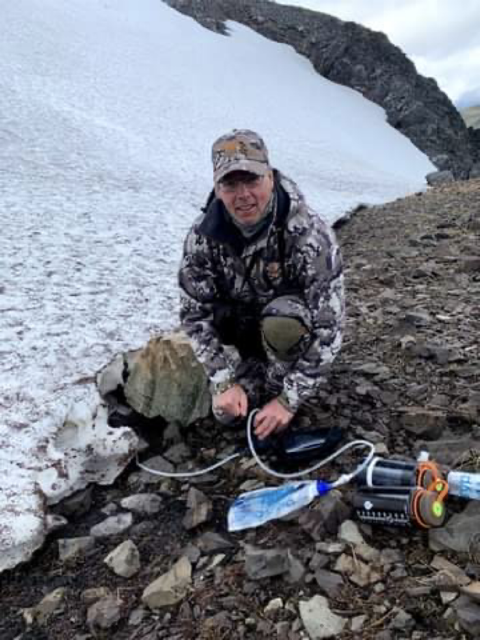
Filtering our drinking and cooking water from aged melting snow.
COOKING
For cooking, we use a Jetboil and bring two propane tanks, one big and one small. In an eight-day hunt, that has been enough fuel for boiling water at breakfast and dinners for two guys. That includes making coffee. We don't bring any other pots or pans, just a small bowl and a long spork each, other than the little pot that comes with the Jetboil for boiling the water. I have used MSR stoves in the past years with no issues, and they ran well. To go with the stove, you should have a water purification system. We use the Katadyn Hiker Pro and an MSR MiniWorks Ex Microfilter. Both work well. I recommend replacing the filter at least every three years, depending on how much you use it and how dirty or silty water you filter. For water storage, we each carry a one-liter Nalgene bottle for daily drinking, 3 Platypus water bladders, two 1 liter, and one 2-liter bag each. These bags are very lightweight and fold up very small, so they are nothing to pack.
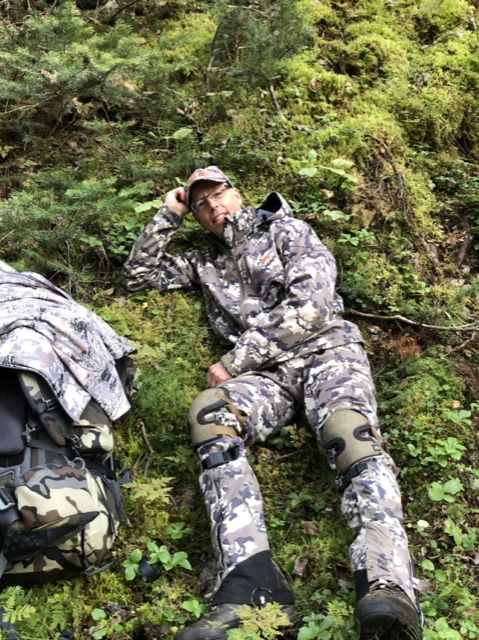
This picture shows my shell jacket and pants, gators, knee pads, and boots.
CLOTHING
Let's discuss the clothing needed for an 8-10 day hunt. For a base layer, I only use synthetic or Merino wool. Absolutely no cotton products! Cotton will leave you wet and cold and does not wick moisture. Cotton kills. My socks will also be merino wool. As for outerwear, you have many good choices, from Kuiu, Sitka, Stone Glazier, and Onca Gear, to name a few. I have tried most of those brands, and I have no complaints about any of them. I wear a shell jacket and pants on an early-season backpacking hunt. I will also bring a puffy jacket and pants for later season hunts. I wear a Montbell synthetic jacket and pants, and I have had them for over ten years. I have slept in my Montbelle's on late-season hunts backpacking when snow was on the ground. I will also use the pants over my hunting pants if it's cold when I'll be in one spot glassing for an extended period of time. They are lightweight, warm, and fit in a small stuff sack. I wear a good pair of gators and knee pads to go over my shell pants. Many pants now come with knee pads built in, but I still use ones that need to be added though I have had good luck with the Arc'teryx brand.
My clothes list consists of:
- 1- hat
- 1- shell jacket and pants
- 1- rain pants and jacket
- 1- lightweight sweater
- 1- long underwear
- 2- base layer T-shirts
- 2- base layer long sleeve shirts
- 2- pairs of socks
- 2- underwear
- 1- beanie
- 1- lightweight balaclava
- 1- pair of lightweight gloves
- 1- pair of gators
- 1- pair of knee pads
If it's a late-season hunt, I'll also bring:
- 1- puffy jacket and pants
- 1- pair of heavier gloves.
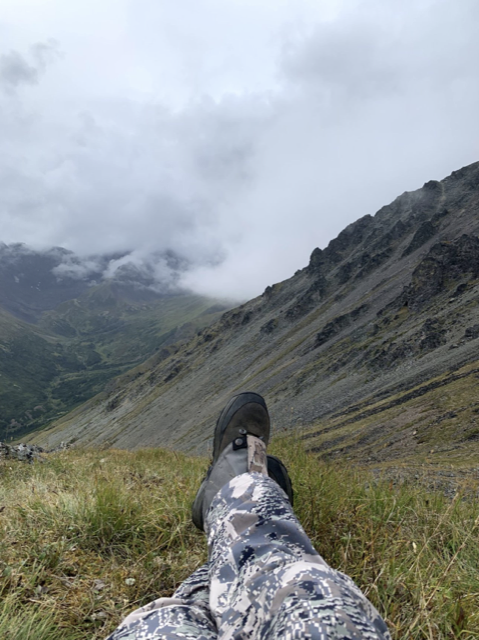
Good boots are a must; break them in and test them well before any backcountry hunt.
FOOTWEAR
Boots are a personal preference, and I have used many brands over the years. My partner and I have been using Lowa boots for the last ten years. The most important thing in buying boots is to get a good fit, with a snug fit at the heel and wiggling room for your toes in front. Once you get a good pair of boots, you will have to adjust them from time to time on the trail and in the mountains. When they get wet, the leather will stretch, and you'll have to adjust the laces. When going downhill, you will want them a little tighter, so your toes don't won't ride into the front of the boot, possibly damaging your toenails. Once you get your boots, look for a good custom pair of insoles. Make sure you break in your boots and insoles by getting out and hiking with them. Over time you will know how tight your laces need to be for uphill or downhill travel. We also carry a pair of lightweight Crocs shoes. These are great for water crossings or wearing in the camp when you want to air out your boots and your feet. Another great idea a week before your hunt is to get a pedicure; this will ensure your nails are properly cut, and your feet will thank you for it later.
TREKKING POLES
Last but not least, trekking poles are really important. When carrying a load on your back and traveling over uneven terrain, trekking poles help you stay stable and reduce the impacts on your ankles, hips, and knees. You can also use trekking poles to pitch a shelter, and they can be used as shooting sticks.
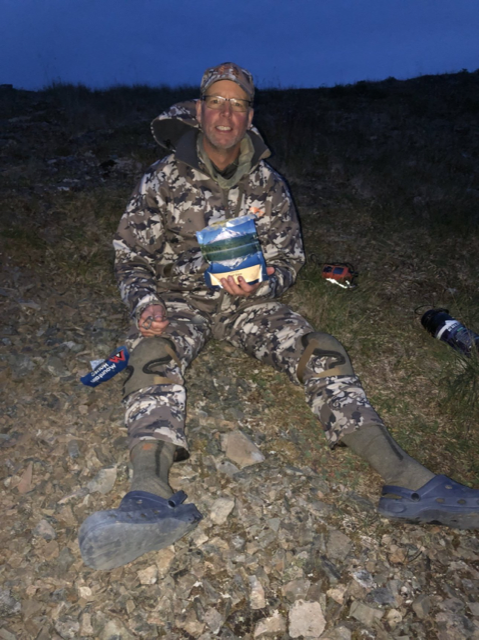
It's nice to take off your boots in camp. These lightweight crocks are a must.
In this article, I have touched on some of the most important gear you can take with you on a backcountry hunt. These are the main items of your kit that you will need to be comfortable and to survive for days or weeks in the backcountry. I haven't touched on survival gear, tools, food, or hunting gear, but I will do that in the next blog.
HUNTING RESOURCES FROM MDT
- Tips For A Successful Antelope Hunt
- Hunting In Inclement Weather
- Analysis: Long-Range Hunting
- MDT Field Report - Why The Triple Pull CKYE-POD is a Guides Best Friend
- Tips for Cold Weather Shooting
- How To Optimize Your Rifle For Positional Shooting
- The Modern Hunting Vest
- Hunting With The MDT XRS Chassis System
- Hunting Stocks Versus PRS-Style Competition Stocks
- Predator Hunting with a Chassis Rifle
- Maximize Performance with Mental Imagery
- Confidence Kills
- Inside MDT - Fitness For Backcountry Hunting
ABOUT THE AUTHOR
Alan Homer lives in British Columbia. He is an accomplished competitive shooter and hunter and owns the BCExtremeOutdoorsman YouTube Channel. He can be reached via Instagram @bcextremeoutdoorsman.


 CAD
CAD
 Euro
Euro
